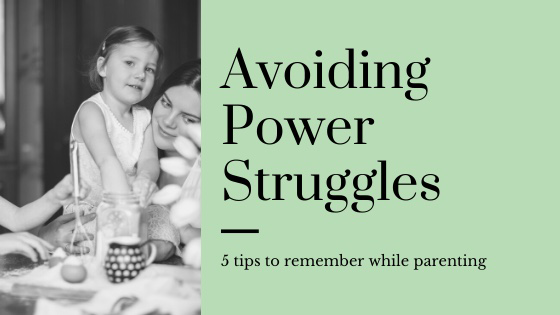|
It is no secret; parenting is hard work! Like any relationship in your life, they require effort, consistency, and compromise. This can seem like a no brainer, but when you add in the variables like your work schedule, stress level, and other responsibilities, parenting can seem overwhelming to navigate. Any power struggles you may have previously been experiencing are likely exacerbated now that we have all been spending a larger amount of time in our homes. Pivot your responses to your child. No one likes to hear ‘no’ all the time; however, it is crucial to establish boundaries with your children. Pivoting is a way of communicating yes to your child but really meaning no. It may sound difficult at first, but it can be a great way to achieve those boundaries while setting some great conditional opportunities for them! Instead of saying no we cannot go to the park until you have finished your homework, try saying yes, we can go to the park once you have finished your homework. This allows for the child to understand that positive completion of tasks normally ends in a positive result. Offer up choices for your child. If a task needs to be completed, try giving the option while still holding them accountable. A child who is resistant to sit and each lunch for example, can be presented with the opportunity to pick where lunch will be eaten. “Would you like to eat lunch in the kitchen on the dining room table, or would you like to eat your lunch outside on the patio?” Again, the goal here is that your child has the autonomy to decide between set options that are age appropriate to your discretion. Reframe the tasks that you want your child to complete. This is a great tool for children and adults alike. Reframing our thinking is much harder as the years progress, but it can still be accomplished with practice. The clean up song is a great example of reframing- a task that is normally perceived as ‘unfun’ or boring, now has this catchy tune sang while the children clean up their mess. If you tell a child to sit still, it is quickly realized that this is a difficult task for them. Instead of saying commands like this, try engaging imagination to reshape the way they think. Stand as still as a statue, this then becomes a fun task instead of a chore for them. If you are frequently met with resistance from your child while trying to complete certain tasks, think about how you can make them more imaginative to keep their focus and attention. Autonomy and power over their own choices is a huge place of conflict between parent and child. But allowing for this shared power to exist is a beautiful thing and fosters skills like self-efficacy and independence. If you are in an over controlling mindset with your child, it can come back at you tenfold in the form of ‘I hate you’ or temper tantrums. Although your intention is to protect them and ensure their safety, it can have negative ramifications. Make sure the power you allow your child to have in decision making is age appropriate. If your child makes a mistake, they will have the opportunity to problem solve and try again. If your child wants to wear a t-shirt and it is forecasted to be breezy, suggest another option. Try saying something like ‘Sweetie, I see you picked a t-shirt today. It is supposed to be a bit chilly, so I would recommend wearing a sweatshirt or light jacket, but it is up to you. Please decide we will leave.’ The direct statement of ‘it is up to you’ provides an opportunity for power sharing. When a child says no, try understanding that this is a disagreement rather than blatant disrespect for authority. Remember you want them to be able to say no to peer pressure or inappropriate behaviors. Them expressing no to you is them learning to establish boundaries for the future, these conflicts are practice runs for how they conduct themselves outside of the home.
0 Comments
Your comment will be posted after it is approved.
Leave a Reply. |
Archives
March 2024
|
